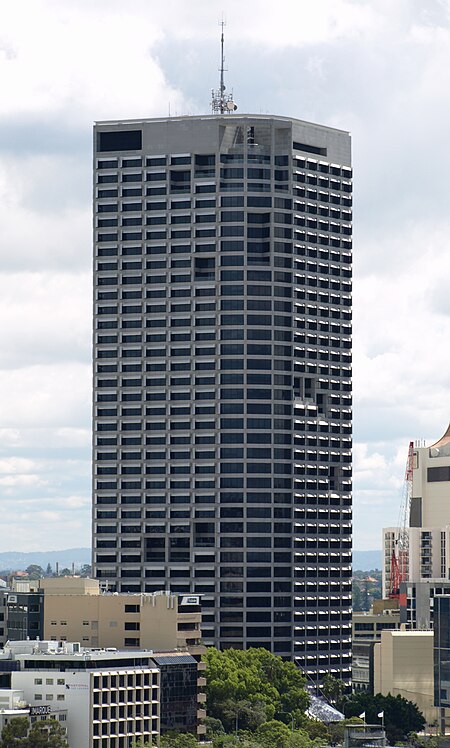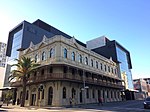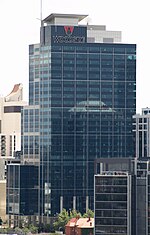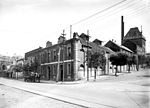QV.1
1991 establishments in AustraliaHarry Seidler buildingsHay Street, PerthOffice buildings completed in 1991Office buildings in Perth, Western Australia ... and 4 more
Retail buildings in Western AustraliaSkyscraper office buildings in AustraliaSkyscrapers in Perth, Western AustraliaSt Georges Terrace

QV1 is a 40-storey modernist skyscraper in Perth, Western Australia. Completed in 1991, the 163-metre (535 ft) building is the fourth-tallest building in Perth, after Central Park, Brookfield Place and 108 St Georges Terrace. The project was designed by architect Harry Seidler & Associates and has won numerous awards for its innovative design and energy efficiency.
Excerpt from the Wikipedia article QV.1 (License: CC BY-SA 3.0, Authors, Images).QV.1
St Georges Terrace, Perth
Geographical coordinates (GPS) Address Nearby Places Show on map
Geographical coordinates (GPS)
| Latitude | Longitude |
|---|---|
| N -31.952375 ° | E 115.850925 ° |
Address
St Georges Terrace 250
6000 Perth (Perth)
Western Australia, Australia
Open on Google Maps










